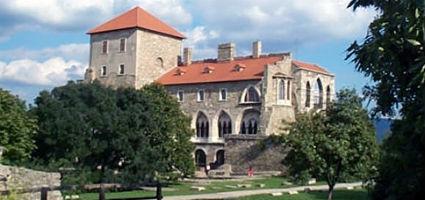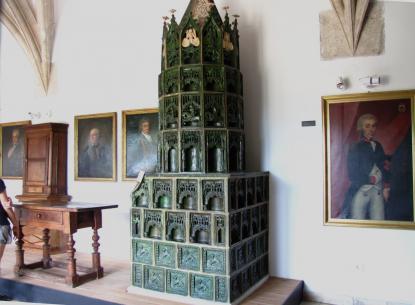2024. April 25. Thursday
Kuny Domokos Museum - Tata
 |
Address: 2890, Tata Váralja u. 1-3.
Phone number: (34) 381-251, (34) 381-251
E-mail: info@kunymuzeum.hu
Opening hours: K-V 9-18
|
The exhibition has closed for visitors.
2012.08.18. - 2012.09.30.
Museum tickets, service costs:
|
Group ticket
|
650 HUF
|
/ capita
|
|
Ticket for adults
|
800 HUF
|
/ capita
|
|
Ticket for students
|
400 HUF
|
/ capita
|
|
Ticket for pensioners
|
400 HUF
|
/ capita
|
|
Ticket for families
(2 adults + 2 children)
|
1500 HUF
|
/ family
|
|
Individual combined ticket for adults
|
1200 HUF
|
|
|
Individual combined ticket for students
|
600 HUF
|
|
|
Individual combined ticket for pensioners
|
600 HUF
|
|
|
Group guide
(up to 10 people)
|
1500 HUF
|
|
|
Group guide
(11-30 people)
|
3000 HUF
|
|
|
Group guide
(31-40 people)
|
4500 HUF
|
|
|
Photography
|
1500 HUF
|
|
|
Video
|
1500 HUF
|
|
|
Wedding photographs
|
10000 HUF
|
The material on display consists of portraits that have never been shown before, some we found in the store of the museum, some were used as decoration in the past.

It is not really a gender history showing, though the visitors, with no doubt, will find out a lot about portrait painting of the 17-19th century about how and why portraits of noble men were commissioned, up to the world of biedermeier portraits. Our basic intention was to show the inherent meaning in portraits, the layers of meaning of which the first, the surface usually reflect on the time period it was made in, then the outfit of the person the portrait was made of tells about his/her social rank, then the accessories painted, then the typical personality traits present even in portraits, the representation of soul by way of the fine tools of painting. We tried to trace the past of the people in the pictures, to solve their secrets. So, we discovered the past of the prince Maria Magdolna Habsburg, the daughter of Leopold I. She and Joseph, who was later on crowned king, are still children in the picture. Maria Magdolna wears jewellery with blue gemstones in her hair and neck, even in the corset. Everything is blue, gold and white, sparkling silk and lace. What, however, the most beautiful in the picture is the blue eyes of the little princess.
Those two portraits that portray an officer of the Emperor's guard and his wife are from 1820 on their wedding. The woman, with her sparkling pearls and lace on her silk dress is a worthy companion for the man with the braid on his uniform. The portrait was made by the young artist Anna Frikart.
Our exhibition was supported by the Baroque Festival. Our colleague, the restorer Károly György Kerti managed to find, them restore pictures he found worthy of the legendary art gallery of the Esterházy family in the Tata Fortress.
Mónika Kövesdi

It is not really a gender history showing, though the visitors, with no doubt, will find out a lot about portrait painting of the 17-19th century about how and why portraits of noble men were commissioned, up to the world of biedermeier portraits. Our basic intention was to show the inherent meaning in portraits, the layers of meaning of which the first, the surface usually reflect on the time period it was made in, then the outfit of the person the portrait was made of tells about his/her social rank, then the accessories painted, then the typical personality traits present even in portraits, the representation of soul by way of the fine tools of painting. We tried to trace the past of the people in the pictures, to solve their secrets. So, we discovered the past of the prince Maria Magdolna Habsburg, the daughter of Leopold I. She and Joseph, who was later on crowned king, are still children in the picture. Maria Magdolna wears jewellery with blue gemstones in her hair and neck, even in the corset. Everything is blue, gold and white, sparkling silk and lace. What, however, the most beautiful in the picture is the blue eyes of the little princess.
Those two portraits that portray an officer of the Emperor's guard and his wife are from 1820 on their wedding. The woman, with her sparkling pearls and lace on her silk dress is a worthy companion for the man with the braid on his uniform. The portrait was made by the young artist Anna Frikart.
Our exhibition was supported by the Baroque Festival. Our colleague, the restorer Károly György Kerti managed to find, them restore pictures he found worthy of the legendary art gallery of the Esterházy family in the Tata Fortress.
Mónika Kövesdi

